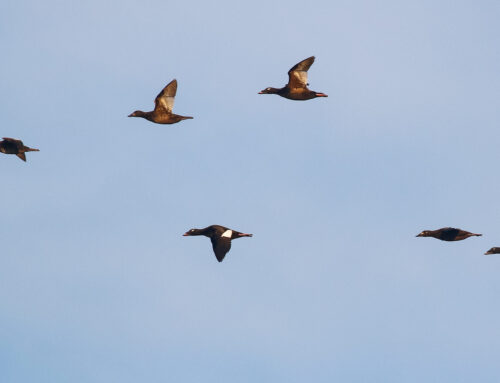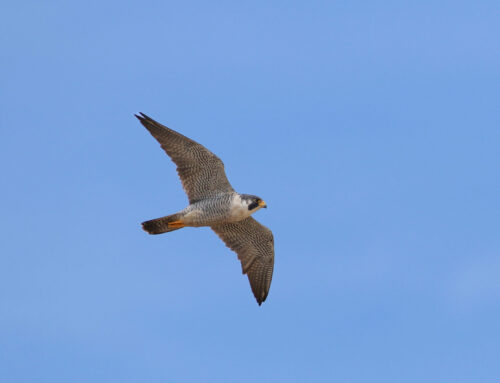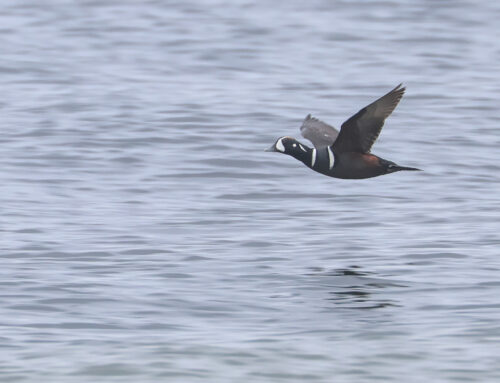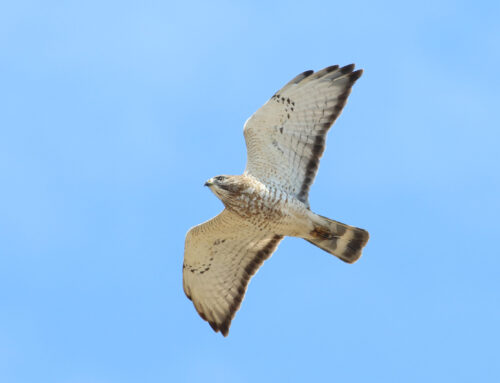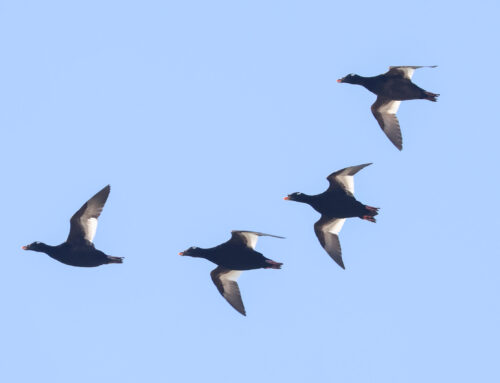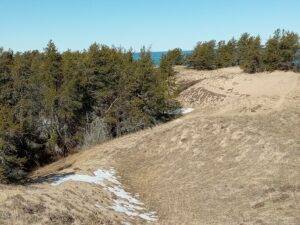
The dunes of Whitefish Point were free of snow on March 15. Photo by Michael Patrikeev
The count started on a bright, sunny day with unseasonably mild temperatures of 40 F (6 C)!
It was nice to see Lake Superior’s turquoise and deep blue waters after many years spent away from the Great Lakes! The observation site is in the middle of an impressive jack pine forest growing on dunes.
The weather looked promising for seeing migrating raptors, and indeed, several Red-shouldered Hawks flew over the platform in the northeast direction. They were followed by several Bald Eagles and three Golden Eagles, making a count of 15 raptors by the end of the first day. Many flocks of Pine Siskins and Red Crossbills were passing overhead.
However, spring weather around Lake Superior is very deceptive. By Saturday, clouds moved in from the west, bringing light drizzle and wet snow. On Sunday, the rain changed to drifting snow, and the dunes were powdered with fresh snow by Monday morning. Strong northern winds prevailed throughout the day, affecting the bird migration.
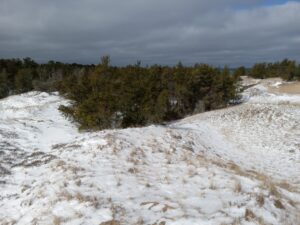
It all changed over the weekend, with a cold northern wind bringing light rain and drifting snow. By Monday morning, the dunes were powdered with fresh snow. Photo by Michael Patrikeev
Very few birds were seen on March 18 — a Bald Eagle, a Golden Eagle, several Common Ravens, and Herring Gulls. More rain and snow are forecast for the week.
~ Michael Patrikeev
2024 Raptor Counter
You can see updates for the 2024 Raptor Count on hawkcount.org, read Michael’s weekly blog post, and follow WPBO’s social media (Facebook, Instagram, and X) for raptor count highlights this season. The raptor count runs March 15 through May 31.

Michael Patrikeev, M.S., is a graduate of St. Petersburg State University (Russia) and studied diurnal birds of prey for his M.S. In later years, he worked at the Lower-Svir Nature Reserve in Russia, and then headed the wildlife inventory section at the Ecological Centre of Azerbaijan. He conducted avifaunal surveys and inventories in the latter country and published “The Birds of Azerbaijan” in 2004. Michael arrived in Canada in 1992 and has since worked for the Canadian Wildlife Service, Ontario Ministry of Natural Resources, Parks Canada, The Nature Conservancy, and Texas Parks and Wildlife. Michael is semi-retired and works in Canada and the United States for wildlife-related contracts. His private interests include the conservation of tropical birds and amphibians.


